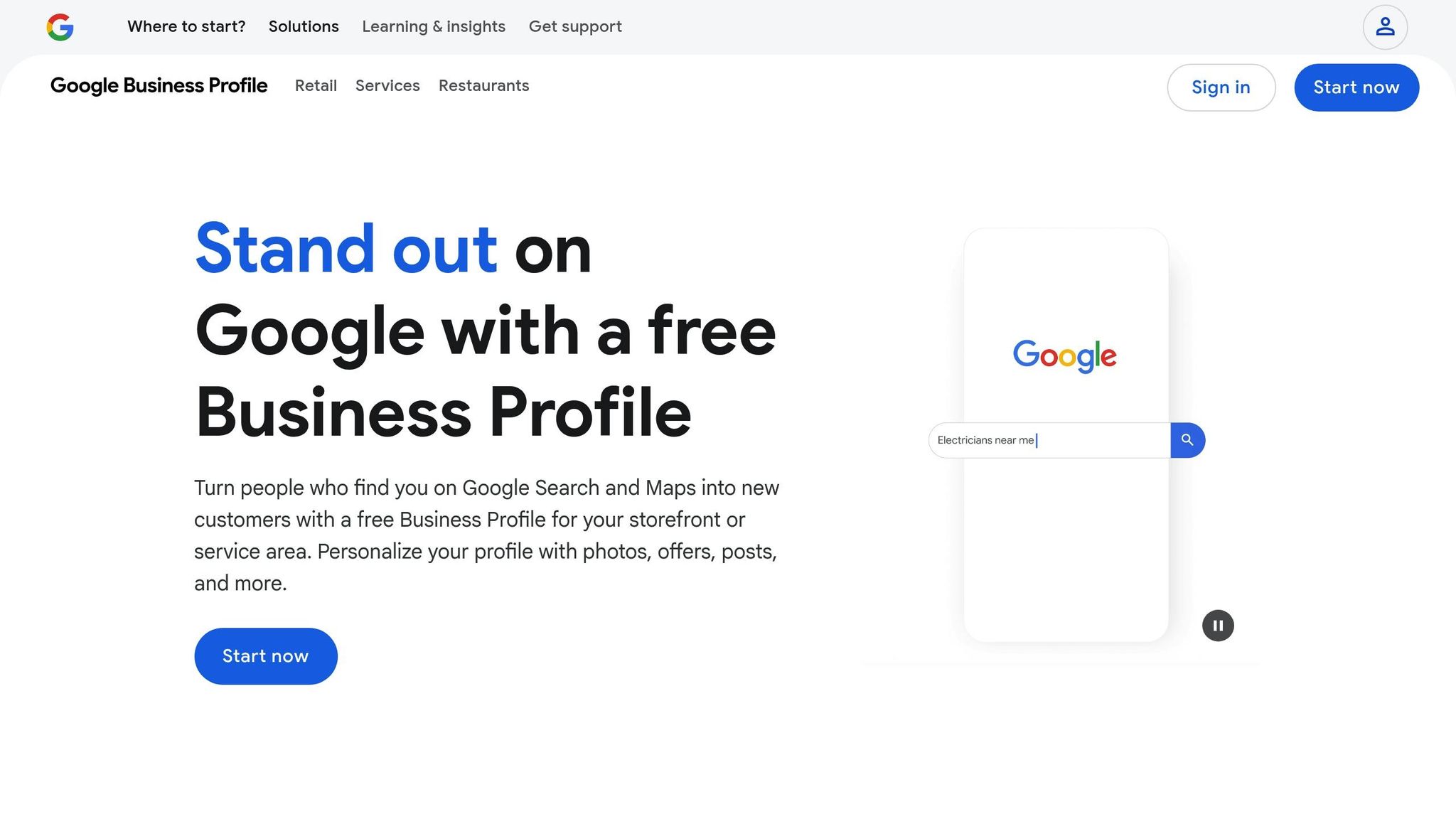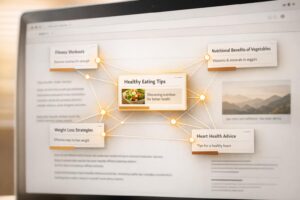Last Updated on September 23, 2025 by Becky Halls
Local SEO is not just a buzzword – it’s a real game changer for businesses looking to drive targeted traffic and secure their spot in the coveted Google Maps “local 3-pack.” Appearing in this compact yet powerful section can vastly increase visibility, generate leads, and ultimately, grow your business. In this article, we’ll break down key strategies, actionable tips, and common mistakes people make, based on expert insights to help you optimize your local SEO efforts.
We put this guide together to help elevate your knowledge and equip you with proven techniques to dominate local search results and rank higher on Google maps.
Introduction: Why Ranking on Google Maps Matters
The Google Maps “3-pack” is the most visible area for local search results, appearing prominently at the top of search engine results pages (SERPs). Studies show it garners the highest click-through rates for local searches, particularly for service-based businesses like roofers, contractors, or lawyers. However, achieving a top spot in this section is no small feat – competition is fierce, and Google’s ranking algorithm demands precision, relevance, and consistency.
But with the right approach, even businesses with limited resources can break through and rank in this prime real estate. This article provides a clear roadmap to assess, optimize, and elevate your local SEO efforts.
The Framework for Local SEO Success
1. Optimize Your Google Business Profile (GBP)

Your Google Business Profile (GBP) is the foundation of local SEO. Ensuring it is complete, accurate, and optimized can make or break your visibility.
Key Steps to Optimize Your GBP:
- Accurate Business Categories: Ensure your primary business category accurately reflects your services. For instance, a roofing company should choose “Roofing Contractor.” If you offer additional services, add secondary categories like “Contractor.”
- Add Localized Keywords: Include your city name and primary service in your business name if applicable (e.g., “Tampa Roof Cleaning”). However, be cautious when editing your business name, as excessive changes can risk profile suspension.
- Reviews Matter: Encourage satisfied customers to leave reviews mentioning your business name, location, and services. For example: “BB Roofing is the best roofing contractor in Staten Island! They were professional and affordable.”
- Use Google Posts: Regularly post updates, offers, or news on your GBP. Posts should include localized keywords (e.g., “We recently completed a metal roofing project in Richmond County, Staten Island”).
2. Website Structure and Content Optimization
Your website must complement your GBP by being SEO-friendly, user-focused, and location-specific.
Homepage Essentials:
- Title Tags and Headings (H1, H2): Use descriptive titles that include your service and location. For example:
- Title Tag: “Top-Rated Roofing Contractors in Staten Island.”
- H1 Tag: “Expert Roofing Services in Staten Island, NY.”
- Prominent Contact Information: Add a clearly visible phone number at the top-right of your website. Double it up in your header and below your main call-to-action.
- Embed Your Google Map: Ensure the map embedded on your website links directly to your GBP. Without this, you risk misaligning key local signals.
Supporting Pages:
- Service Pages: Create highly specific pages for each service you offer (e.g., “Metal Roofing Installation”, “Shingle Repairs”). Use relevant keywords and include local modifiers (“Shingle Roofing in Tampa”).
- Location-Specific Pages: If you serve multiple neighborhoods, create a page for each area. For example: “Roofing Services in Graniteville” or “Residential Roof Repair in Richmond Terrace.”
Avoid Common Mistakes:
- Generic headings like “Explore Our Services” do not help Google understand what you do or where you operate. Replace these with descriptive, keyword-rich headings.
- Forms placed below the fold are rarely filled out. Place them above the fold for better engagement.
3. Harness the Power of Reviews
Reviews are a cornerstone of local SEO. Google uses reviews as a trust signal, and they heavily influence rankings.
Tips for Generating and Optimizing Reviews:
- Frequency Matters: Aim for consistent reviews – ideally 3-5 per week for smaller businesses.
- Content Counts: Reviews should include the service provided, location, and key details like professionalism, quality, or affordability. For example: “Great roofing service near the 122nd Precinct in Staten Island!”
- Time Your Requests: Reviews posted during business hours (e.g., 2–4 PM) tend to stick more reliably in Google’s system.
- Respond Thoughtfully: Always reply to reviews – even negative ones. This shows engagement and can improve rankings over time.
4. Leverage User Behavior Signals
Google tracks user interactions to gauge relevance and authority. Simulating natural search behavior can have a significant impact.
Boost Click-Through Rate (CTR):
- Ask loyal customers or friends to search for your primary keyword (e.g., “roofer near me”), scroll to your listing, and click it. They should either visit your website or call your business directly from the listing.
- Completing actions like filling out contact forms or making calls further reinforces the legitimacy of your listing.
- Start small: 1-2 CTR engagements per day can yield noticeable results if done consistently.
Driving Directions:
- Employees, clients, or family members can use Google Maps’ driving directions from various starting points to your business address. This signals Google that your business is active in the local area.
5. Content and Backlink Strategies
Creating quality, location-specific content and earning local backlinks are essential for long-term success.
Local Content Creation:
- Write blog posts targeting long-tail keywords like “How to Maintain a Metal Roof in Tampa’s Climate.”
- Add unique content about your city or neighborhoods you serve. For example, “5 Things to Know About Roofing in Richmond County.”
Gain Local Backlinks:
- Reach out to local blogs or directories to list your business.
- Engage with local forums or websites where you can leave thoughtful comments with a link to your homepage.
Key Takeaways
- Optimize Your GBP: Ensure categories, reviews, and posts are accurate and keyword-rich.
- Website Alignment: Use location-specific keywords in title tags, headings, and content.
- Focus on Reviews: Generate 3–5 reviews weekly. Include keywords, locations, and service details.
- Utilize User Signals: Simulate CTR and driving direction behavior from unique devices.
- Content and Backlinks: Produce localized blog posts and secure links from local directories or blogs.
- Tools for Monitoring: Use grid-rank software like Local Falcon to track your Google Maps performance.
Conclusion
Ranking higher on Google Maps requires a thorough blend of technical optimization, customer engagement, and consistent effort. By implementing the strategies outlined above, you can significantly improve your chances of breaking into the local 3-pack, driving relevant traffic, and boosting revenue.
Local SEO isn’t just about rankings – it’s about creating a robust online presence that reflects your business’s real-world value. Remember, the details matter. From your title tags to the reviews you generate, every signal you send to Google contributes to your local ranking success.
Start small, implement these steps deliberately, and watch your visibility soar.
Source: “INSANE Local SEO Strategies – Rank Rank Higher Than 99 % of Local Businesses -2025” – Mindsaw, YouTube, Sep 3, 2025 – https://www.youtube.com/watch?v=zLfyKoUHg4s
Use: Embedded for reference. Brief quotes used for commentary/review.



